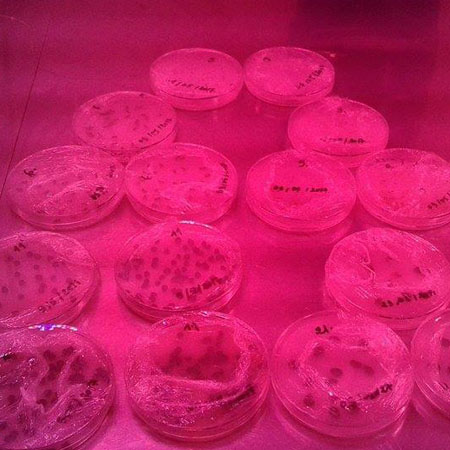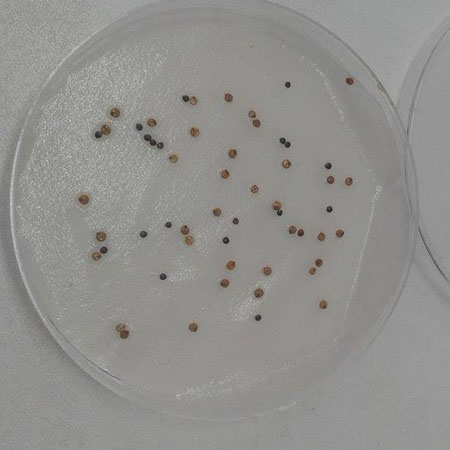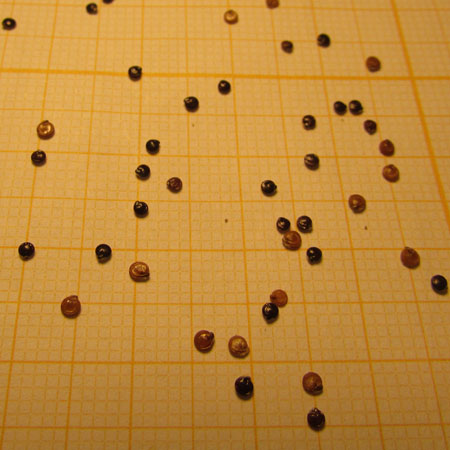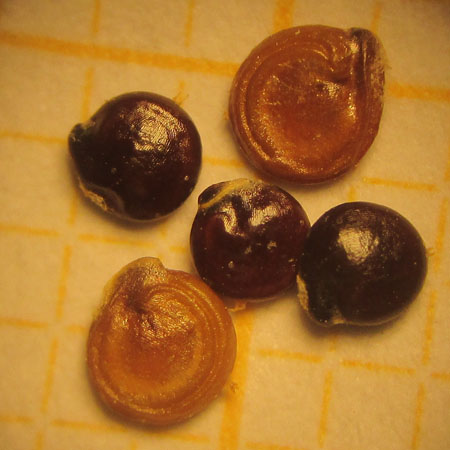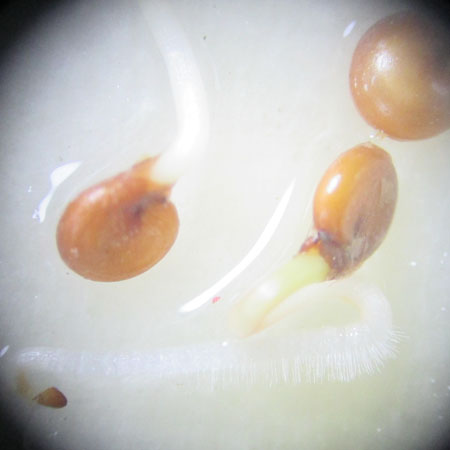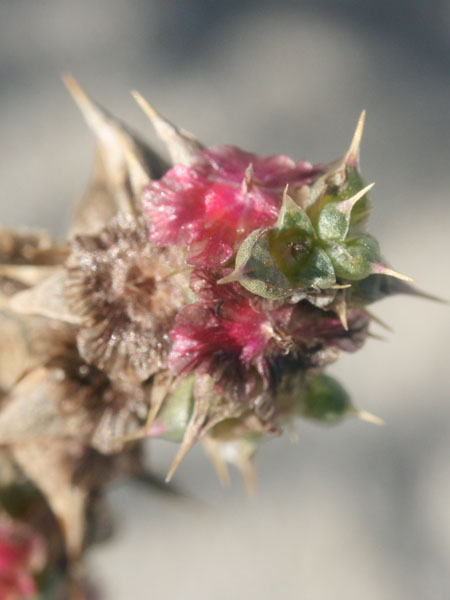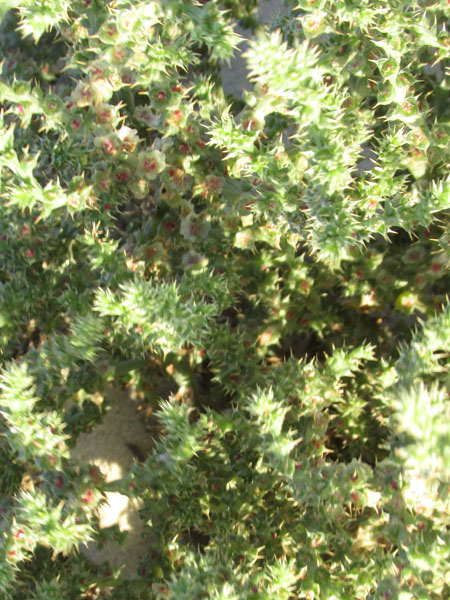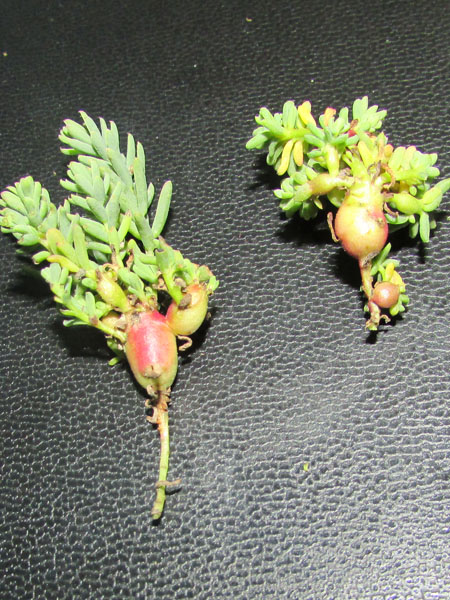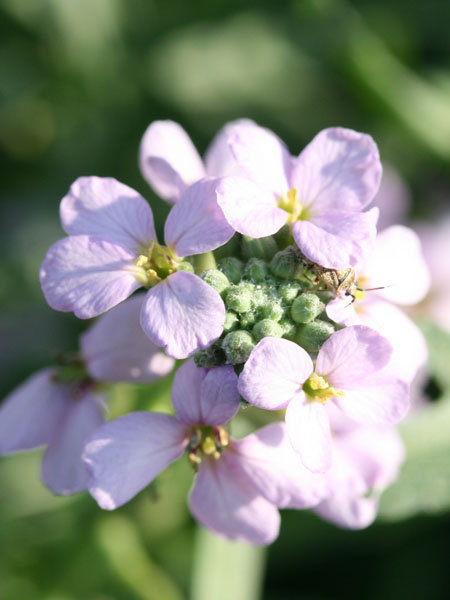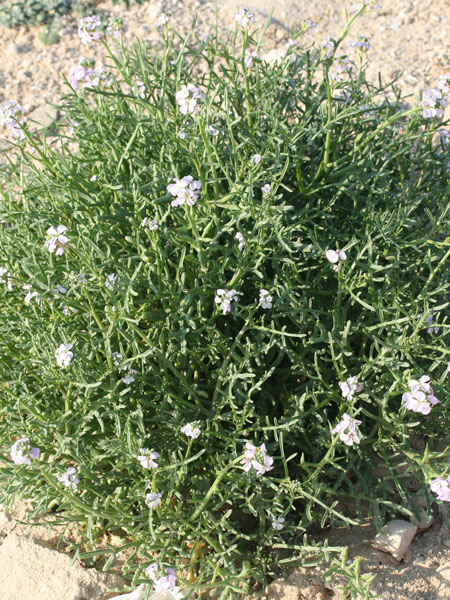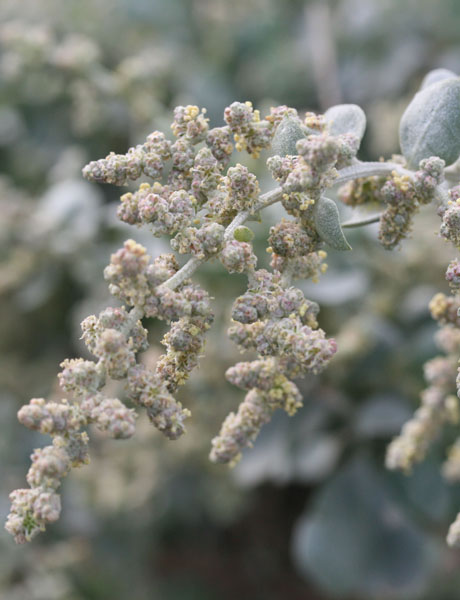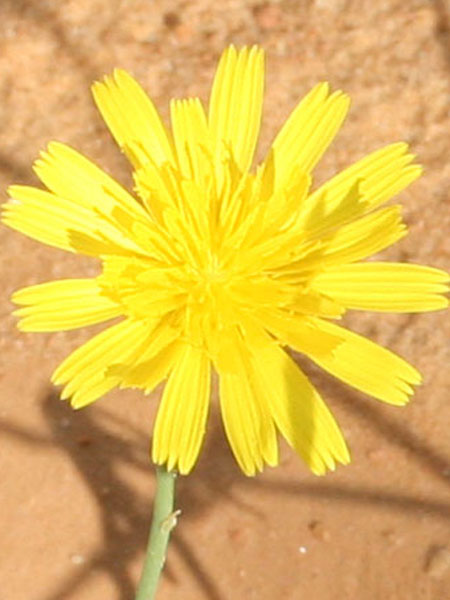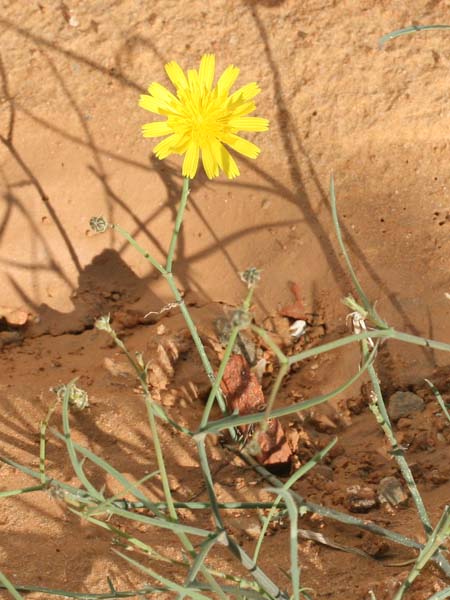Atriplex lindleyi
Kingdom : Plantae / النّباتات
Division : Spermaphyta / البذريات
Clade : Magnoliophyta or Angiospermae / مستورات البذور
Class : Eudicotyledoneae / ذات الفلقتين
Order : Caryophyllales / رتبة القرنفليات
Family : Amaranthaceae [Chenopodiaceae] /فصيلة السّرمقيات أوالرّمراميّة أو القطيفيّة
Genus : Atriplex
species : lindleyi
Chromosomes: 2n=18
Protologue
Moq. in DC., Prodr. 13 (2): 100 (1849)
Synonyms
Atriplex inflata F. Muell., Trans. & Proc. Philos. Inst. Victoria 2: 75 (1858). Atriplex lampifer Buxb., Z. B. Ges. Wien, 76: 47 (1938). Blackiella inflata (F. Muell.) Aellen, Bot. Jahrb. Syst. 68: 426 (1938).
Common names
Tunisia Arabic English French Tamazight
قطف
رغل
Lindley's saltbush
Arroche à fruit vésiculeux
Toxic
no
Edible
no
Latex
no
Botanic description
Genus description
"Monoecious or polygamous plants. Perigon herbaceous, with 3-5 divisions in male flowers and hermaphrodite and with 2 opposite valves in female flowers. Stamens 3-5. Styles 2, filiform welded at the base. Membranous fruit, ovoid, compressed in the 2 accrescent valves of the perigone, bare or provided with dorsal appendages. Vertical seed in the horizontal female flowers in hermaphrodite, lenticular, black or brown flowers.
Species description
"Very ramous plant often from the very beginning, forming small shrubs down to 30-60 cm tall or more.
Stems very ramous often at the base, whitish brittle and scaly erect. Leaves rhomboidal a little fleshy, little or not toothed, silver on both sides, simple and alternate. Inflorescence very foliated. Fruits close together along the twigs, vesicular about 1 cm in the shape of a diamond. Fruiting valves almost entirely welded, dilated, spongy depressed at the top. Seeds small red or lenticular black located near the top of the vesicle.
Botanic References
Pottier-Alapetite G. (1981). Flore de la Tunisie Angiospermes –Dicotylédones (Apétales- Dialypétale , Première partie). Imprimerie Officielle de la République Tunisienne (Eds), 56 p. Edouard LE FLOC’H, Loutfy BOULOS et Errol VELA. (2010). Catalogue synonymique commenté de la FLORE DE TUNISIE. République Tunisienne, Ministère de l’Environnement et du développement durable, Banque Nationale de Gènes. 500 p www.theplantlist.org
Biology
Life form Annual or perennial Type form Therophyte Photosynthesis C4
Phenology
Blooming
JanuaryFebruaryMarchAprilMayJuneJulyAugustSeptemberOctoberNovemberDecember
Fruiting
JanuaryFebruaryMarchAprilMayJuneJulyAugustSeptemberOctoberNovemberDecember
Map Localization
Ecology
Adaptation Shrubs grow on dry soils and prefer sunny exposure. Salt bladder yes Invasive no
Geographical distribution
Localization Biocimatic stage Annuel pluviometry (mm) GPS Djerba (Déc.2013) Higher arid 209 33°51'45.62"N/10°47'20.49"E Mahdia (Sebkha Sidi El Hani, Avril 2017) Inferior semi-arid 248 35°31'37.22"N/10°17'5.85"E Monastir (Déc.2013; Juillet 2016) Inferior semi-arid 331 35°46'42.41"N/10°47'37.19"E
General uses
Medicinal uses
"Antidiabetic, Antibacterial antifungal
NOTE : This website is not that of herbal medicine and assumes no responsibility for the negative effects of the use of plants. Seek advice from a professional before using a medicinal plant.
Systems / Organs / Effects
Hypoglycemic
Description of the seeds
Form lens shape External structure any Ornamentation any Type of seed Average length of 10 seeds 2 ± 0,1 (mm) Average width of 10 seeds 2 ± 0,1 (mm) Average thickness of 10 seeds 0.1 ± 0,01 (mm) Average mass of 100 seeds (g)
Test results
TPC DPPH ABTS+ FRAP Year mg GAE g-1 MS CI50 g ml-1 CI50 g ml-1 CE50 g ml-1 24,05± 0,29 7,20± 0,39 14,67± 0,18 28,10± 0,23 2016 Total Phenols content(TPC), Anti-radical potentialities against (DPPH, ABTS), Ferric reducing antioxidant power(FRAP)
Molecules : ADN / Proteins
Chromosomes : 18 Uniprot NCBI
Tunisian references
Atia A, Rabhi M, Debez A, Barhoumi Z, Abdelly C, Smaoui A (2011). Factors controlling germination and dormancy processes in dimorphic fruits of Atriplex inflata (Chenopodiaceae). PLANT ECOLOGY AND EVOLUTION. 144, 3, 307. -312. Chaieb M, Boukhris M (1998). Flore succinte et illustrée des zones arides et sahariennes de Tunisie. Association pour la protection de la nature et de l’environnement, Sfax. 189 p.
Other references
Ashby WC and Beadle NCW. (1957). Studies in Halophytes III. Salinity factors in the growth of Australian saltbushes. Ecology. 38, 344-352. El Souda SED, Abdelmageed Matloub A, Nepveu F,Valentin A, Roques C. (2015). Phenolic composition and prospective anti-infectious properties of Atriplex lindleyi Asian Pac J Trop Dis; 5(10): 786-791. Mohammed R, El-Hawary SS, Abo-youssef AM. (2012). Biological investigation of some wild Aizoaceae and Chenopediaceae species growing in Egypt Journal of Natural Products, Vol. 5:193-206. Mulas M, Mulas G. (2004). The strategic use of atriplex and opuntia to combat desertification. Short and Medium- Term Priority Environmental Action Programme(SMAP) University of Sassari Desertification research Group p.14.






















